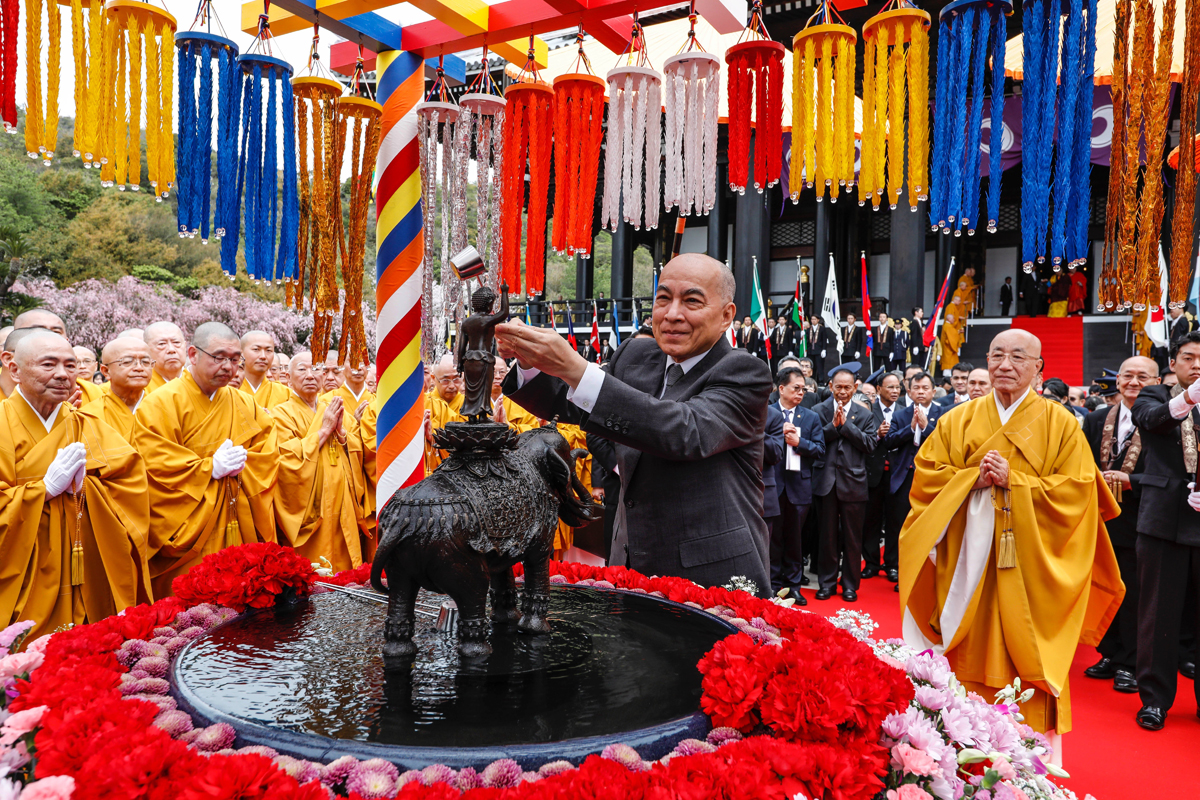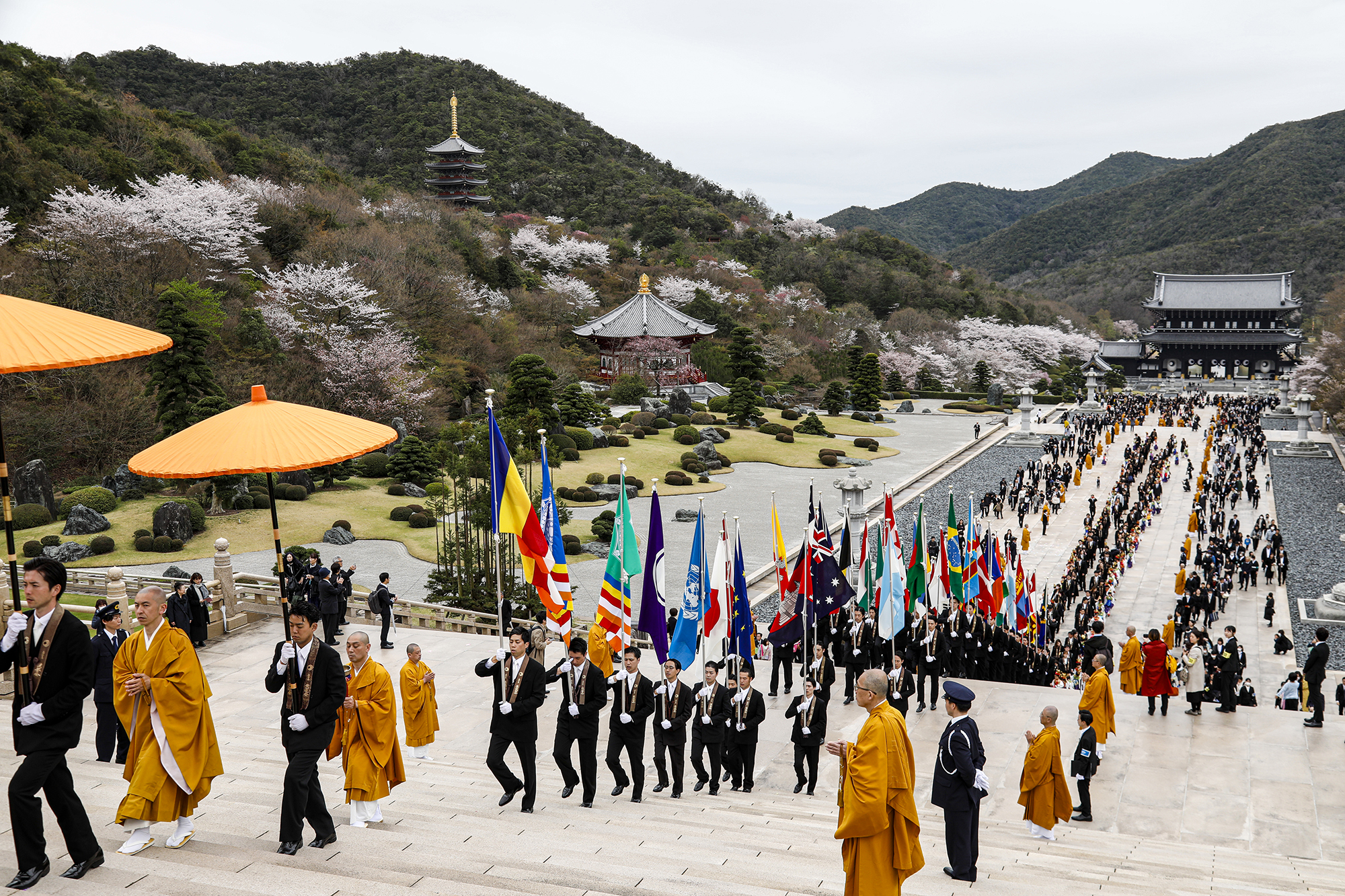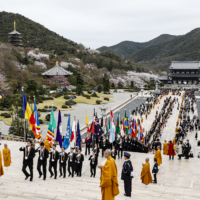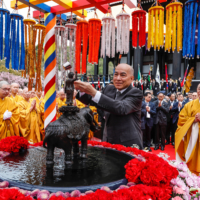On April 8, International Buddhist Day, a large ceremonial celebration to commemorate the birth of Buddha was held at Shakyamuni Hall in the Royal Grand Hall of Buddhism at the foot of Mount Mikusa in Kato, Hyogo Prefecture, with Cambodian King Norodom Sihamoni attending as the chief guest of honor.
The service was attended by about 300 people, including Buddhist leaders from around the world and about 60 ambassadors, legislators and royal family members from 13 countries ranging from Bhutan to Vietnam.
The Kanbutsu-shiki, a ritual to celebrate Buddha’s birth by pouring sacred water onto a statue of him as a newborn, and the Chigo Oneri Kuyo, a procession involving preschoolers, were held the same day.
According to the Buddhist Summit, the organizer also known as the World Buddhist Supreme Conference Headquarters, about 31,000 people visited the temple surrounded by cherry blossoms in full bloom to celebrate International Buddhist Day this year despite cloudy weather and occasional rain.
Buddha was born on April 8. It was decided by unanimous vote at the Sixth Buddhist Summit at the Royal Grand Hall in 2014 that this day would be designated International Buddhist Day to promote the prosperity of the religion. The hall is the head temple of the Nenbutushu sect and home to the re-established Nalanda Mahavihara, the prestigious academic institute and monastery that was originally built in northeast India in the third century.
The Royal Grand Hall of Buddhism has become a sacred site for 520 million Buddhists on five continents and is visited not only by monks, practitioners and believers, but also by people from Japan and abroad who are interested in its culture, history, teachings and practices.
While the service was being held in the hall at the far end of the complex, the children’s procession took place along the 1-kilometer approach to it from the main gate. They were between the ages of 3 and 5, dressed in special ceremonial costumes and accompanied by their parents. The procession was led by monks who threw sange (pieces of colorful paper cut in the shape of lotus petals) in an orderly manner followed by parishioners carrying the flags of the 51 member countries of the Buddhist Summit.
The procession has been held on the same day for five consecutive years and can be joined by the children of parishioner families from across Japan and children from the local community. This year, 350 children from Hokkaido to Kyushu attended. Two parishioner families that brought their 4-year-olds to the event said they came from Gifu Prefecture.
“Our children participated in the procession last year, too. We mothers have also been here to help organize the event (since) some years back,” a woman said. Many children said they enjoyed the walk.
After the children’s procession arrived in front of the main hall, the Kanbutsu-shiki began.

The ritual involves three large basins mounted on platforms of flowers being placed in the spacious square in front of the main hall, each enclosed by a colorful gazebo decorated with tassels. The basins, brimming with water, each had a statue of Buddha on an elephant standing in the center.
When Sihamoni proceeded to bathe the statue with a small ladle, the sun shone for a moment amid the cloudy sky. Following the king, other guests and participants took their turns at the ladles to celebrate Buddha’s birthday and International Buddhist Day.
The Kanbutsu-shiki ritual, held every April 8 at temples throughout Japan, is now observed in 51 countries on five continents and is gradually becoming an important part of Buddhist culture, thanks to the establishment of International Buddhist Day.





